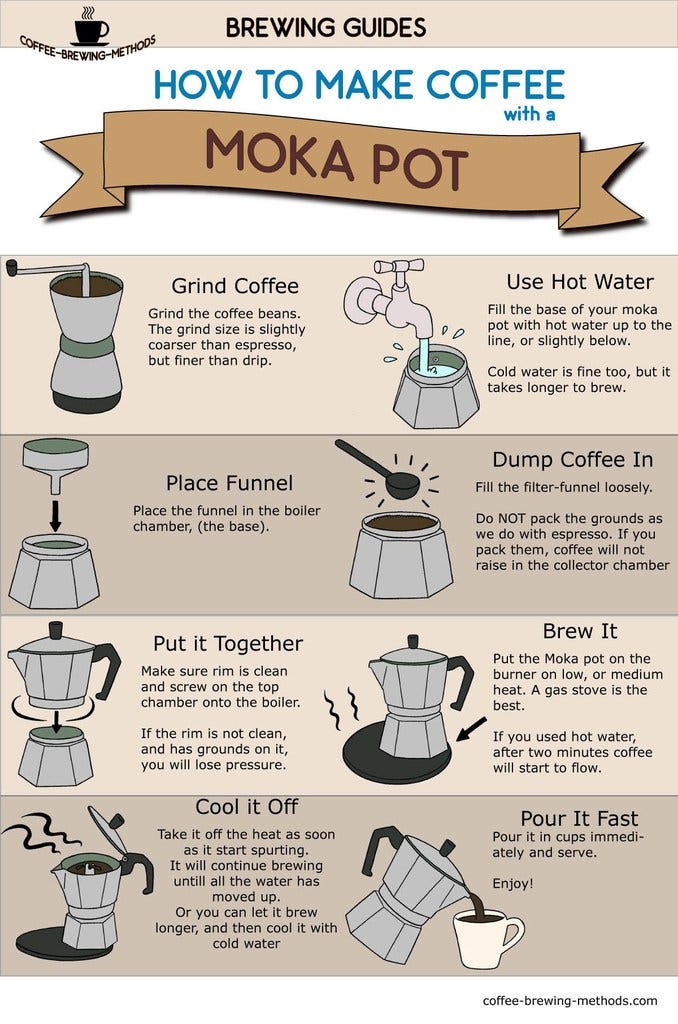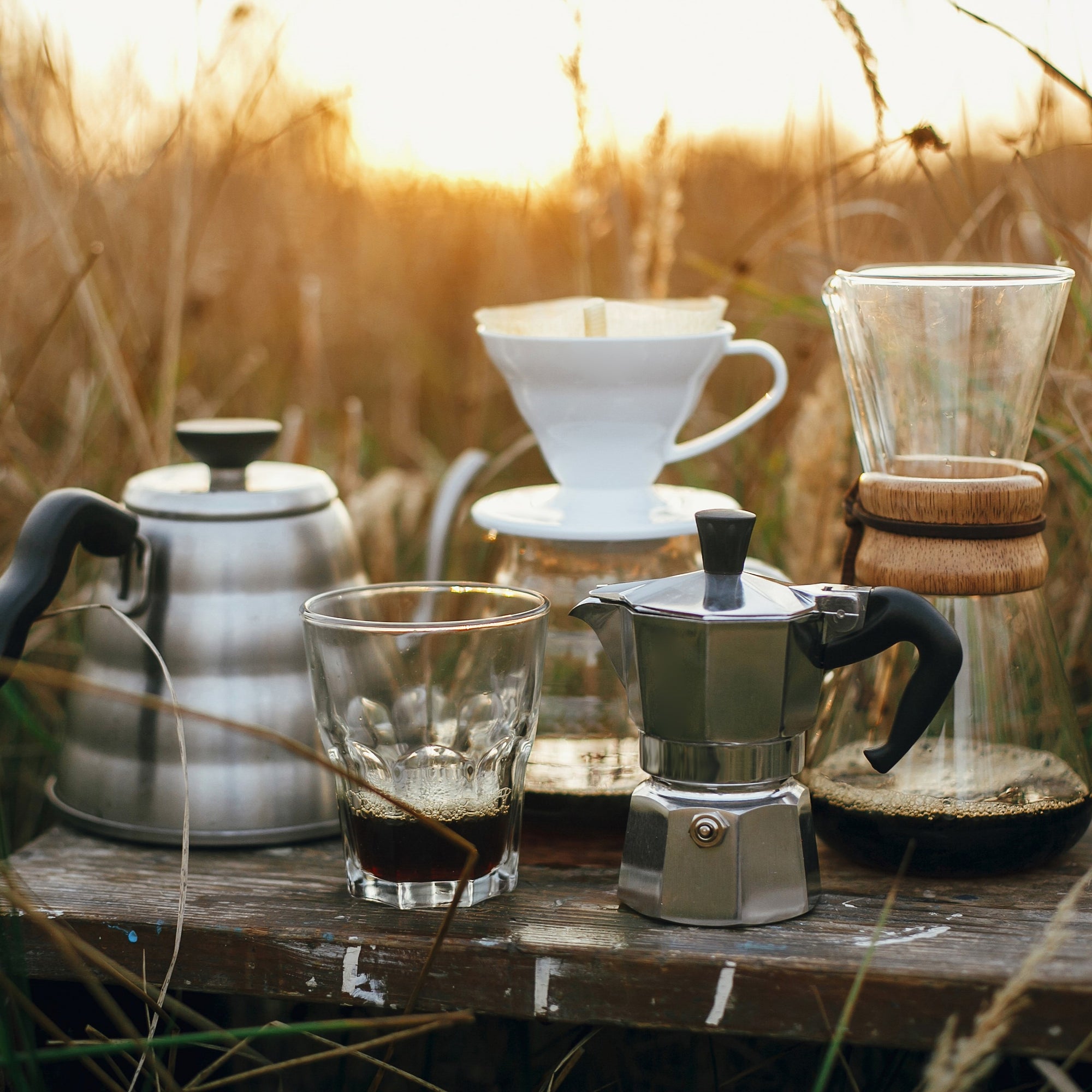Coffee Brewing Methods: Opening the Keys to the Perfect Mug in your home
Coffee Brewing Methods: Opening the Keys to the Perfect Mug in your home
Blog Article
The Scientific Research Behind Coffee Developing: Exactly How Temperature Level and Time Affect Your Beverage
Comprehending the scientific research behind coffee developing reveals that temperature and time are not mere variables but crucial aspects that determine the beverage's flavor account and general quality. As we explore the subtleties of these components, the question occurs: how can one properly equilibrium temperature level and time to attain that best brew?
The Chemistry of Coffee Extraction
The chemistry of coffee removal dives into the detailed procedures that transform raw coffee beans right into the fragrant beverage delighted in worldwide. This improvement mainly includes the solubility of numerous compounds existing in the beans, which are influenced by factors such as work dimension, water quality, and the developing method utilized.
During the brewing process, warm water functions as a solvent, extracting soluble substances, including caffeine, acids, sugars, and lipids, from the coffee grounds. Each substance adds to the taste account, fragrance, and body of the final beverage. Acids are accountable for brilliant and tasty notes, while oils contribute to a rich mouthfeel.
The removal procedure is not uniform; different compounds dissolve at different rates. The initial phases of brewing extract acids and sugars, bring about a positive level of acidity, while prolonged extraction can result in resentment because of over-extraction of unfavorable substances. Recognizing these chemical communications is critical for enhancing developing methods, as the equilibrium between removal time and water temperature level can significantly influence the overall high quality of the coffee. Ultimately, mastering the chemistry of coffee removal is vital to achieving a all-round and tasty mug.
Perfect Developing Temperatures
Finding the best brewing temperature level is necessary for unlocking the full potential of coffee tastes and aromas - coffee brewing methods. Research study shows that the optimum range for developing coffee lies in between 195 ° F to 205 ° F(90 ° C to 96 ° C) Within this array, the removal process successfully liquifies the desirable soluble compounds in coffee beans, bring about a balanced and tasty cup
Developing at lower temperature levels, such as below 195 ° F(90 ° C ), may lead to under-extraction, generating a weak and acidic brew with low-key flavors. Alternatively, brewing at temperatures exceeding 205 ° F(96 ° C) can result in over-extraction, creating a harsh and bitter preference because of the too much dissolution of unfavorable compounds, such as tannins.
In addition, the perfect brewing temperature can vary depending on the coffee bean type and roast level. For circumstances, lighter roasts often benefit from slightly greater temperature levels to enhance their complex taste accounts, while darker roasts may be much better suited to lower temperature levels to mitigate anger.
Eventually, preserving accuracy in developing temperatures is critical for accomplishing a harmonious balance of tastes, making certain that every mug of coffee delivers a satisfying sensory experience.
Impact of Brewing Time
Developing time plays a critical role in determining the flavor profile and general quality of coffee. The removal process, which affects the preference, scent, and body of the drink, is largely depending on the length of time the coffee grounds touch with water. Much shorter developing times can result in under-extraction, resulting in a weak or sour flavor, as inadequate soluble substances are liquified. On the other hand, extended brewing can bring about over-extraction, where unwanted substances are released, leading to a bitter or astringent taste.
Ideal brewing time varies relying on the approach utilized and the work size of the coffee. A French press generally requires concerning four mins, while coffee removal is generally completed within 25 to 30 secs. It is necessary to calibrate developing time in combination with other variables, such as water temperature level and coffee-to-water ratio, to accomplish the desired taste profile.
Comprehending the influence of developing time allows coffee fanatics to fine-tune their developing techniques, eventually improving the sensory experience of their mug (coffee brewing methods). With careful attention to this variable, one can open the full potential of the coffee, revealing its one-of-a-kind characteristics and nuances
Developing Methods and Their Effects

For circumstances, approaches like French press and chilly mixture allow for a much longer steeping time, causing a fuller body and robust taste because of raised extraction of oils web and soluble solids. Conversely, coffee brewing uses high pressure and a much shorter removal time, creating a this focused shot that stresses intense tastes and a rich crema.
Pour-over methods, such as Chemex or V60, provide a more regulated removal procedure, enabling the maker to control flow price and water circulation, which can enhance illumination and quality. Meanwhile, percolation methods cycle water through the coffee grounds numerous times, bring about a more powerful, often bitter taste.
Finally, using paper filters versus steel filters can additionally influence the final taste; paper filters usually generate a cleaner cup by capturing oils and fine particles, while metal filters enable more oils to travel through, adding to a fuller mouthfeel - coffee brewing methods. Recognizing these subtleties can raise the coffee experience considerably
Tips for Improving Your Brew
A well-executed brew can transform also the simplest coffee right into an exceptional experience. To attain this, interest to information is vital. Start with premium, freshly baked beans, as their flavor profile reduces with time. Grind the beans just before making to maximize quality, guaranteeing the work dimension matches your brewing method-- coarser for French press and finer for espresso.
Water top quality plays a vital role; use filtered water without pollutants. The excellent brewing temperature level varies in between 195 ° F and 205 ° F(90 ° C to 96 ° C ) As well warm can burn the coffee, while discover here as well trendy might under-extract tastes.
Timing is similarly crucial. For immersion methods, steeping for three to five minutes is optimum, whereas drip techniques generally take about five minutes. Experiment with brew times to locate your favored stamina.

Verdict
In summary, the elaborate partnership in between temperature and time is paramount in the coffee developing process. Following optimum brewing temperatures between 195 ° F and 205 ° F, along with exact timing tailored to each method, guarantees the preferred taste account is achieved. Comprehending these scientific principles equips individuals to fine-tune their developing techniques, inevitably bring about a more balanced and pleasurable coffee experience. Mastery of these factors is vital for any kind of coffee fanatic looking for quality in their drink.
Comprehending the scientific research behind coffee developing exposes that temperature and time are not mere variables however pivotal elements that dictate the drink's taste account and overall high quality. Recognizing these chemical interactions is essential for enhancing brewing techniques, as the equilibrium in between extraction time and water temperature level can significantly affect the overall high quality of the coffee.Developing time plays a crucial function in identifying the flavor profile and general high quality of coffee. By concentrating on these aspects-- bean top quality, grind dimension, water temperature, steeping time, and ratio-- you can elevate your coffee developing process, resulting in a continually remarkable mug.
In recap, the detailed connection in between temperature and time is critical in the coffee brewing procedure.
Report this page